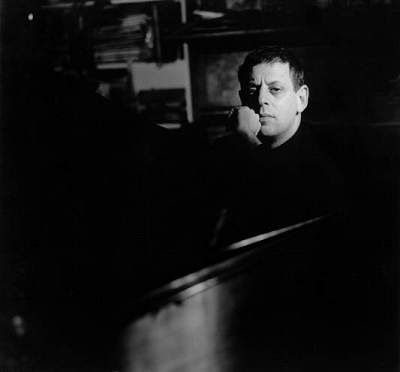|
<< -- 3 -- Gordon Rumson INNER SOUNDS

Alternately, one might suggest that his music is merely an extended development
of the 'vamp till ready' form that appeared in musicals and Broadway shows.
Performers just kept playing the same thing over and over until the stage
was set, the costumes changed, or the curtain up.
Personally, I wonder if minimalism (a term Glass doesn't much care for),
isn't related to the dashed lines of the omnipresent superhighways in America.
Long drives across endless plains watching those lines pass by at varying
speeds always reminds me of minimalism.
However, I actually think something else is going on. The basic notes
of Philip Glass's music are very few and usually surrounded by a haze of
the overtones created by the damper pedal of the piano. In these overtones
I think I hear the inner octaves of George Gurdjieff and P D Ouspensky.
They believed that objective art was created by the movement of these inner
sounds and that such music far transcended the value of mere subjective
emotive art forms. Glass, who traveled in the East (including Afghanistan)
and who while, overtly a Buddhist, is probably very closely associated with
aspects of modern Sufism, might very well be aiming at exactly this.

Philip Glass. Photo © Babette Mangolte
|
The haze of sound he creates actually does activate those harmonics and
their subtle movement is the real melody of the music. It is the music beyond
the mere sound. For this reason this very simple material seems to have
a quite profound effect upon people, though rarely the trained musician.
Why that might be is another story.
Copyright © 10 January 2003
Gordon Rumson, Calgary, Alberta, Canada
 GOLDEN GLOBE NOMINATION FOR PHILIP GLASS
FOOL'S GOLD - INDIRECT TEACHING?
REVIEWS OF LIVE CONCERTS AT MUSIC & VISION
PHILIP GLASS
GOLDEN GLOBE NOMINATION FOR PHILIP GLASS
FOOL'S GOLD - INDIRECT TEACHING?
REVIEWS OF LIVE CONCERTS AT MUSIC & VISION
PHILIP GLASS
| 
